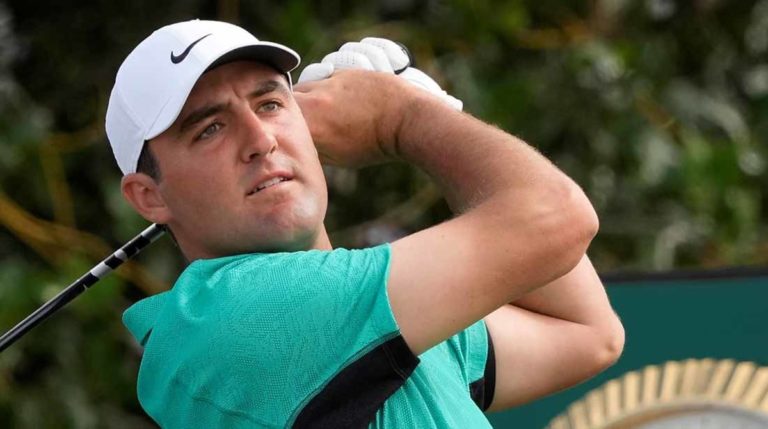Going to the golf course is, in many respects, very similar to going to a local gym
SILVER SPRING, Maryland (Nov. 11, 2018) – Add golf to your list of favorite forms of exercise. Yes, going to the golf course is, in many respects, very similar to going to a local gym for a group exercise session or a cardio workout. That’s one of the messages from the recently completed 7th Congress of the International Society for Physical Activity and Health (ISPAH) in London.
At this event, the results of a recent golf study, commissioned by the World Golf Foundation and supported by The Royal & Ancient Golf Club of St. Andrews (Scotland), revealed convincing evidence that playing golf can help burn calories and help trim your waistline.
For the golf industry, it’s great that worldwide leaders in public health, public policy and the world of sport firmly believe that golf can play a major role in the race to tackle global physical inactivity and to help prevent a range of non-communicable diseases, such as heart disease, stroke, diabetes and cancer of the breast and colon. Golf’s role in helping to prevent non-communicable diseases is important because nearly three quarters of all premature deaths in the world each year are connected to non-communicable disease, according to the World Health Organization.
That ‘play-golf-to-get-fit’ message has believers in the U.S. Here in the U.S., PHIT America, a non-profit campaign focused on overcoming the severe ramifications of the ‘Inactivity Pandemic,’ which is impacting more than 82 million Americans, is also a big proponent of golf as a way to stay active and physically fit.
“The research that we have uncovered indicates that during an 18-hole round, a cart-rider will burn 1,300 calories, while a golfer who walks will burn as many as 2,000 calories,” said PHIT America Founder Jim Baugh. “That is the equivalent of jogging on a treadmill for two hours and 10 minutes.”
The amount of walking involved in golf is significant — roughly a mile for those riding in carts and approximately five miles for anybody who actually walks all 18 holes.
“Another big benefit of playing golf is the increased volume of oxygen flowing through the brain and body, stimulating healthy cell function,” added Baugh. “Swinging the golf club is equivalent to doing at least 200 twists. Teeing up the ball and picking up your golf ball simulates toe touches. You’ll use virtually every muscle in your body during a round of golf.”
The scientific research on the health and fitness benefits of golf was conducted by the University of Edinburgh (Scotland) and was published in the British Journal of Sports Medicine – the 2018 International Consensus Statement on Golf and Health. The findings reveal that playing golf is associated with a range of physical and mental health benefits. And, for golf to truly reach the masses, it’s agreed that further collaborative efforts to improve access for the sport for the general public are needed. That is a glowing endorsement for more public golf courses.
Physical inactivity is truly a global issue as one in four adults and four out of five adolescents (age 11-17) in the world are insufficiently active, according to the World Health Organization’s Global Action Plan for Physical Activity.
As the 7th Congress of the International Society for Physical Activity and Health came to a close, the testimonials in support of golf were loud and clear.
“Golf is working hard to encourage more people into the sport, who will realize its many health benefits,” said Martin Slumbers, Chief Executive of the R & A. “With 60 million golfers spanning six continents, golf has found common purpose in working with public health practitioners and policymakers to optimize the health benefits of playing the sport. Golf is a popular sport for men and women and it is great to see golf’s global leadership recognizing health priorities and identifying ways golf can be more accessible to more people.”
“Given the health benefits, we must work together to make golf more accessible if we are to achieve our sport’s full potential,” said World Golf Hall of Famer Annika Sorenstam.
Two U.S. medical doctors agree with the importance of walking, which is a big part of a golf experience. They are also members of Doctors for PHIT America, who believe that physical activity is the best prescription for total health.
“Exercise is the greatest medicine that we have,” says Dr. Darrin Bright, Director, OhioHealth Runner’s Clinic. “I believe exercise can change your life one step at a time.”
“Regular physical activity is one of the most important things a person can do to remain healthy,” says Dr. Liz Joy, Adjunct Professor, Family & Preventive Medicine, University of Utah School of Medicine. “The risk of doing nothing far exceeds any risk associated with a brisk walk!”
Founded in January 2013, PHIT America is a non-profit campaign focused on overcoming the severe ramifications of the ‘Inactivity Pandemic’ through four strategic approaches – education, supporting school-based activity programs, a national event and advocating – which will get Americans, especially our youth, more active, fit and healthy.









